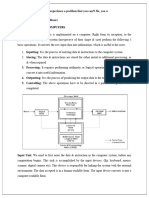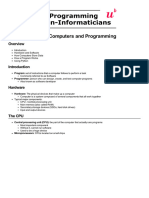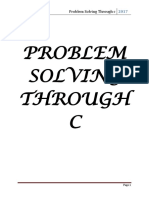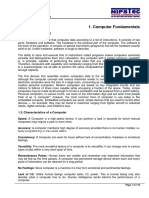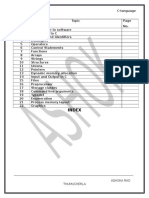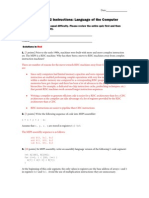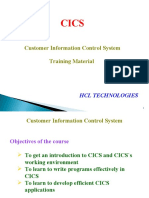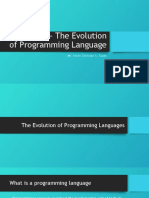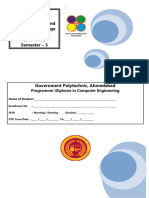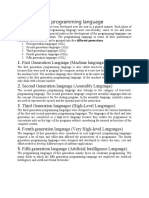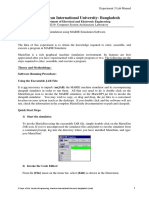0% found this document useful (0 votes)
3 views4 pagesBasics of Computer
The document outlines the basic functions and components of computers, highlighting five key functions: Input, Save, Execution, Output, and Control. It describes the two main components of a computer system: hardware, which includes the CPU and input/output devices, and software, which consists of programs that operate on the hardware. Additionally, it explains the transition from high-level programming languages to machine language, emphasizing the role of assemblers and compilers in this process.
Uploaded by
abhi1219kCopyright
© © All Rights Reserved
We take content rights seriously. If you suspect this is your content, claim it here.
Available Formats
Download as PDF, TXT or read online on Scribd
0% found this document useful (0 votes)
3 views4 pagesBasics of Computer
The document outlines the basic functions and components of computers, highlighting five key functions: Input, Save, Execution, Output, and Control. It describes the two main components of a computer system: hardware, which includes the CPU and input/output devices, and software, which consists of programs that operate on the hardware. Additionally, it explains the transition from high-level programming languages to machine language, emphasizing the role of assemblers and compilers in this process.
Uploaded by
abhi1219kCopyright
© © All Rights Reserved
We take content rights seriously. If you suspect this is your content, claim it here.
Available Formats
Download as PDF, TXT or read online on Scribd
/ 4



